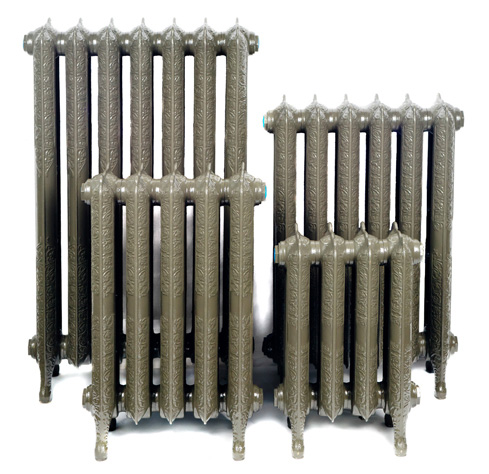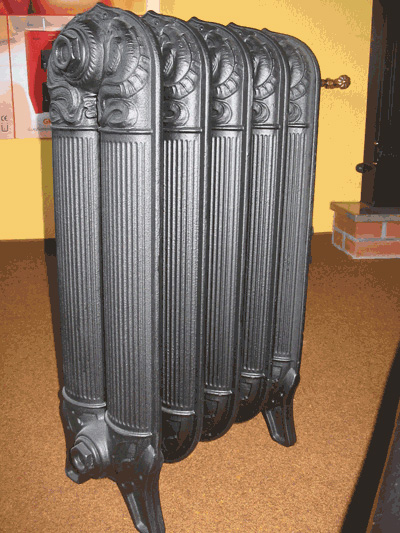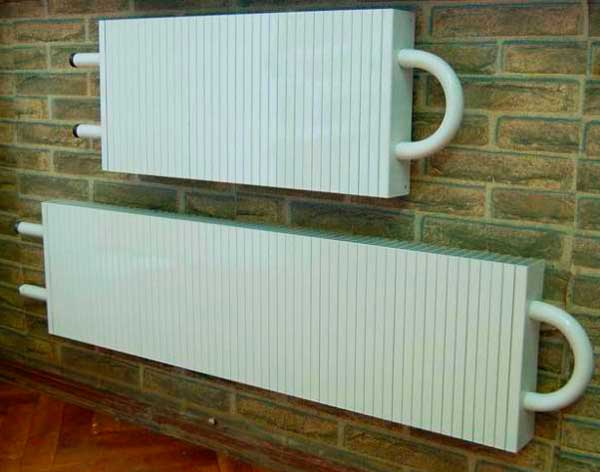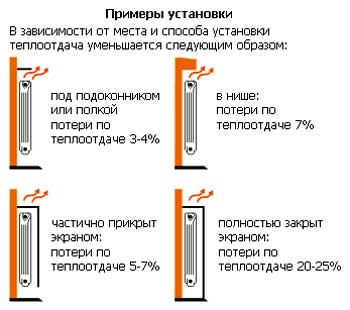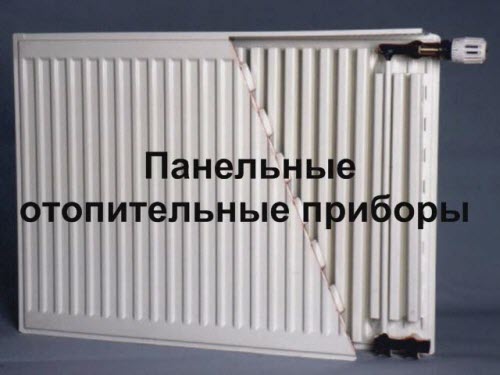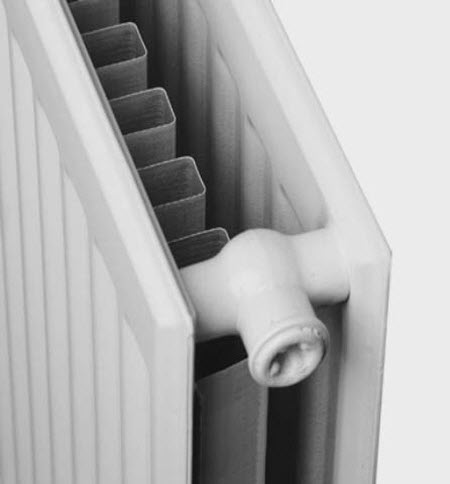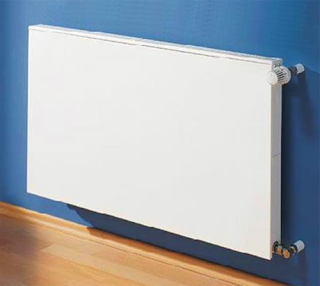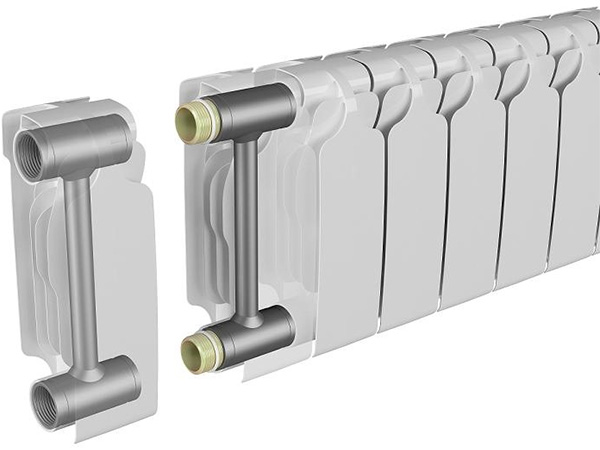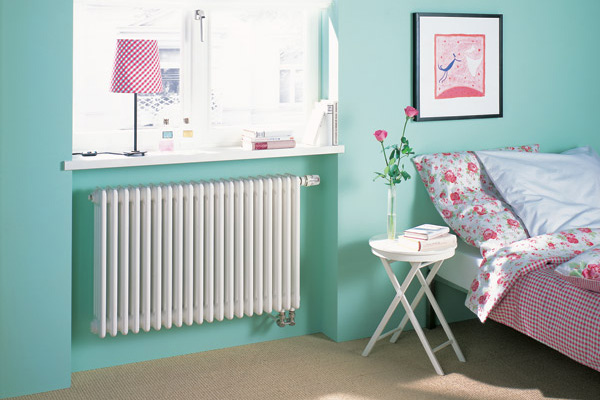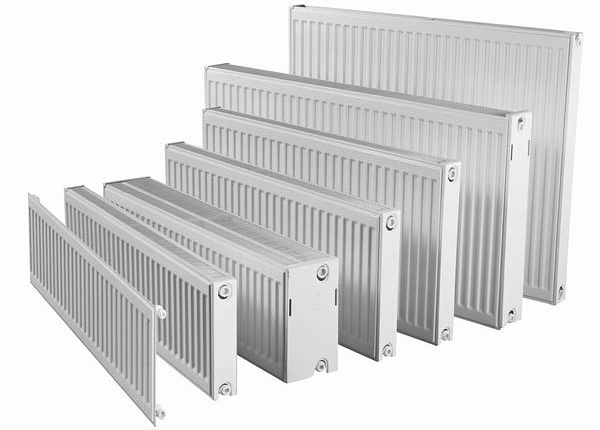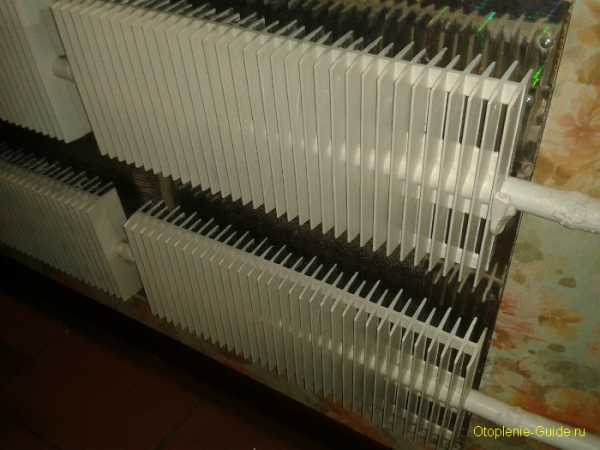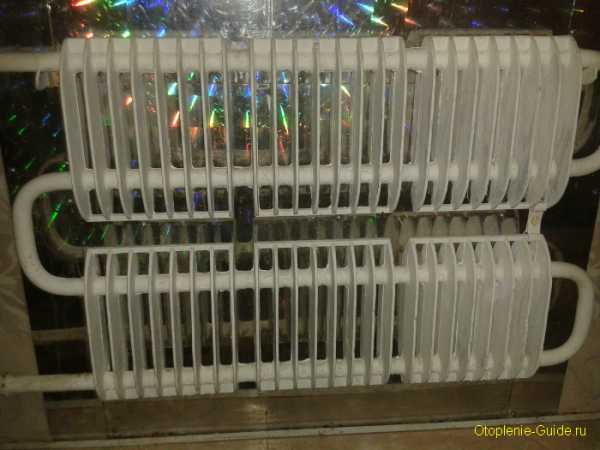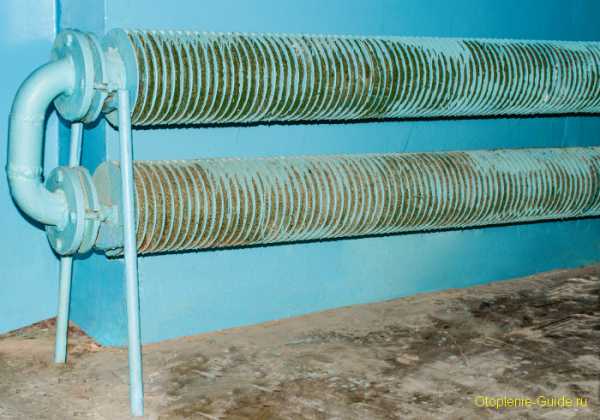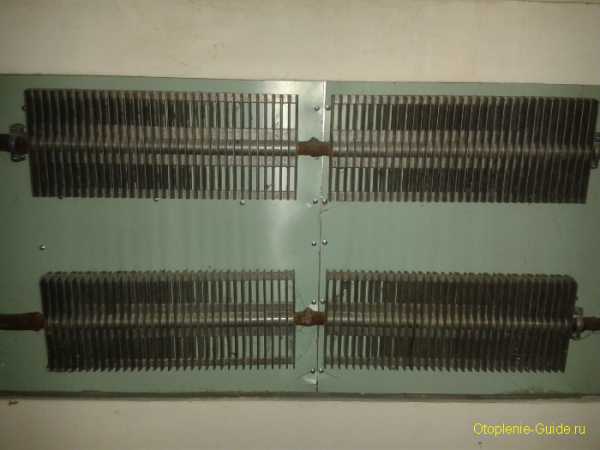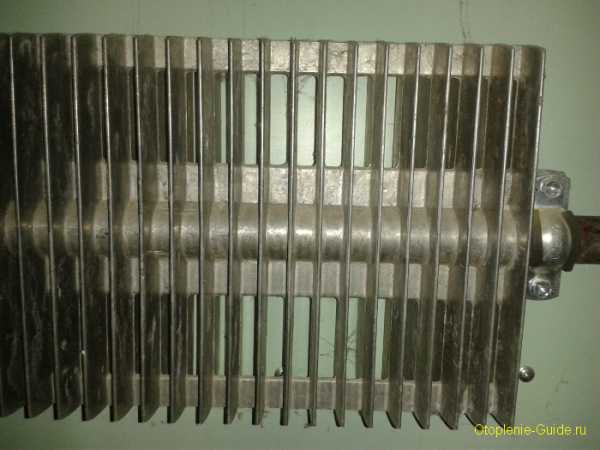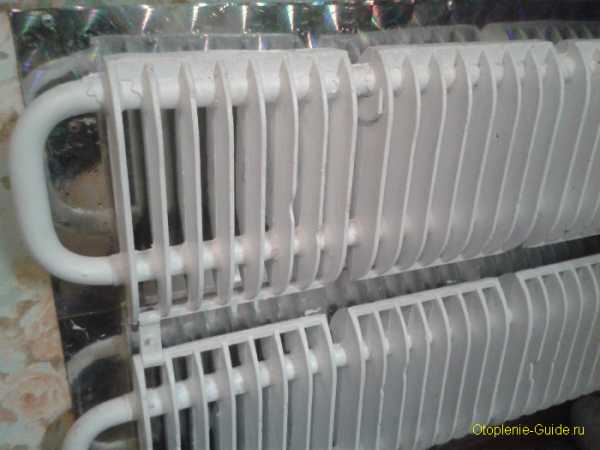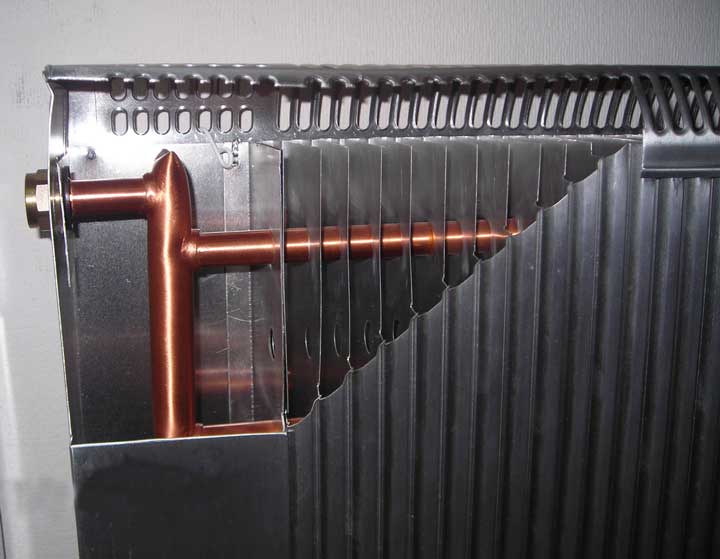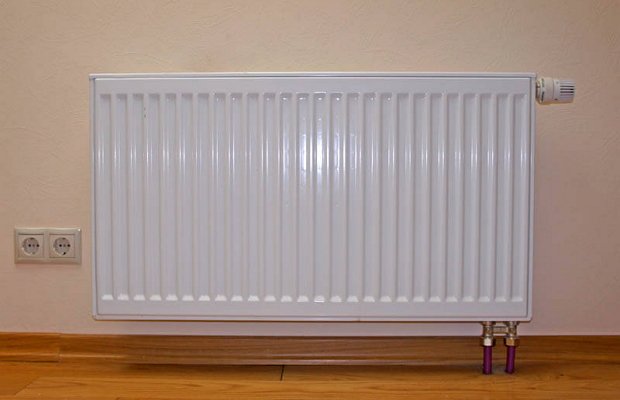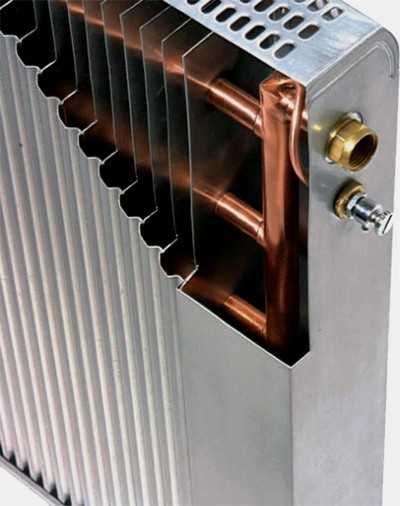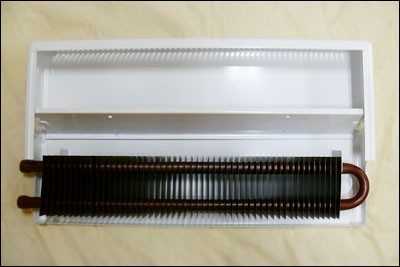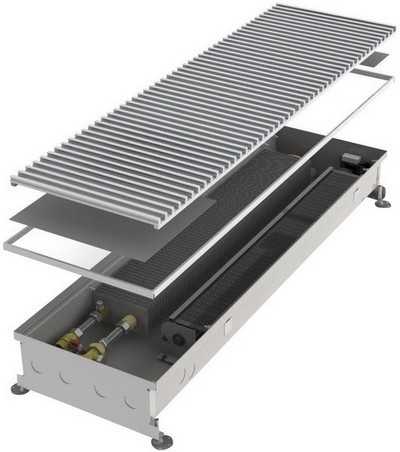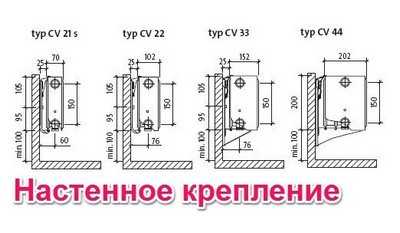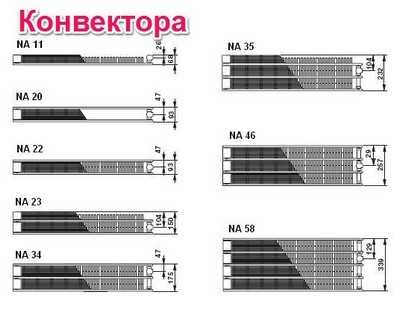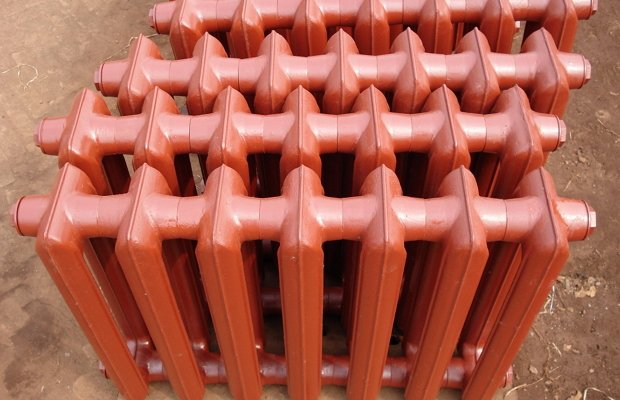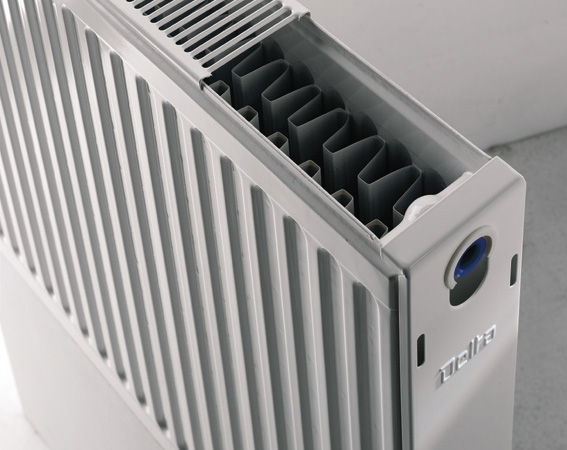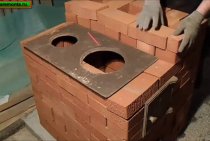Cast iron sectional radiators
The first development of cast iron batteries was carried out almost 150 years ago by our compatriot. A few years later, the Americans received a patent and finalized the design. Radiators gained popularity after the advent of the central heating system, and their mass production was adjusted during the industrial revolution.
The batteries that were used in the USSR and now remain in many homes have the MS 140 brand. The value "140" is the power given by one section. The operating and test pressure of the battery is 9 and 18 atmospheres, respectively. The number of sections is from 4 to 10.
Today, cast iron radiators are gaining popularity again, thanks to the improvement of their design and design.
The advantages and disadvantages of this type of battery are approximately the same.
- Long service life (more than 50 years);
- Affordable price;
- Resistance to mechanical damage;
- Corrosion resistance;
- High abrasive wear. Pebbles and sand in the water do not cause much harm to the battery from the inside;
- Heating efficiency at the maximum number of sections.
- Great weight and bulkiness;
- Possibility of depressurization of joints;
- Accumulation of rust inside during long-term operation;
- Unpresentable appearance;
- Difficulty in embedding radiators in autonomous heating systems, the impossibility of saving on the coolant;
- Difficulty cleaning.
Convector radiators
Convector-type radiators are connected to a conventional heating system. A distinctive feature is a completely different way of functioning.
Panel, sectional or tubular radiators give off heat to the environment from their hot surface, which allows you to heat the room.
The work of convectors is arranged differently. Their design provides for the presence of many thin air channels located between the ribs of the plates.
The air in the room passes through them, heats up, becomes lighter and rises, which ensures continuous movement and mixing of air, i.e. constant heating
This allows you to evenly warm the room, which is important, even the presence of many interior items and partitions will not be an obstacle.
- They are light, compact and reliable, because. made of copper, steel and aluminum - corrosion-resistant materials
- Requires a relatively small volume of water in the system.
- They heat up fairly quickly and cool down just as quickly.
- Such radiators allow you to heat rooms with high ceilings.
- The heating system with convector radiators allows you to save money when buying equipment. Those. in such a system, pipes of small diameter are used, a sufficiently low power of the circulation pump, and the coolant itself has a small volume.
- Very simple installation, which can be carried out without special skills.
- There is a huge choice of appearance options for the convector body. What can be a beautiful addition to your interior. Replacing the housing is very simple and takes only a few minutes.
- Increased security, i.e. the heat exchanger is completely enclosed by the casing.
All batteries have their drawbacks, which are functional in nature. The convector radiator is durable, economical, safe and quite beautiful. The only negative is the high price, because they are made from high-quality and expensive materials.
A characteristic such as power will help to correctly give preference to one or another type of radiator. It is easy to calculate it: in a room with a ceiling height of 300 cm and one window, 100 watts will be needed to heat one square meter. When the room has two outer walls, add another 20%. If there are two external walls and two windows, add 30%.When the window exits to the north side - 10% should be thrown. An important factor will be the installation of radiators, because no matter how good you buy batteries, if they are installed incorrectly, there is still zero sense from this.
There are certain rules for installing radiators:
- Batteries must be placed under the windows
- their length must correspond to the length of the window, or at least half the length
- in the corner room, you can install an additional pair of radiators along the outer wall
- it is better to mount heating risers in the corners. This will ensure their heating and the ability to avoid blackening of the wall and the formation of mold.
- they must always be available.
When choosing heating radiators, you should rely on the technical characteristics of the radiators and the heating system itself, as well as the budget. With proper study, you can always find a middle ground for yourself.
You will be interested to read:
- Installation of sandwich chimneys through the wall of the house. step by step technology
- How to heat a country frame house. Options and profitable ideas
- Do-it-yourself stove device for a house with a water circuit for heating
- Do-it-yourself chimney cap and its installation in the house
Steel panel radiators
These radiators are rectangular panels:
The panel radiator is made of two steel sheets welded together. Vertical grooves are squeezed out in the sheets, through which the coolant circulates.
Steel panel radiators are made of one, two or three panels. Vertical pipes are welded to the back sides of these panels to enhance convection:
Convection pipes for panel radiators
Panel radiators are produced with a height of 300 ... 900 mm, a length of up to 3 m, a depth of 60 ... 165 mm.
The advantage of panel radiators is their low weight, so they can be mounted alone, powerful brackets are not needed, and the material of the walls can be not only concrete or brick, but also wood and some kind of frame sheathing (as you probably guessed, comparison carried out with cast iron radiators).
In panel radiators, it is easy to control the temperature of the coolant, due to the low thermal inertia of these heaters.
Cons of steel panel radiators:
- panel heating batteries are designed for low pressure (6-8 atm. - working and up to 13 atm. test), hence their sensitivity to water hammer;
- the inner surface of the panels is subject to corrosion;
- poor hygiene, because dust and cobwebs accumulate between the panels, and it is very difficult to get to this muck.
From the foregoing, we draw conclusions: it is more correct to install panel radiators in private houses and take care of the quality of the coolant.
General minus of steel radiators
The "weak link" common to all steel radiators is oxygen susceptibility. Well, that is, they rust, as everyone knows. Moreover, they rust not so much from the outside as from the inside, when the coolant was drained from them.
This does not mean that you need to flatly disown steel batteries. You just need to understand in which heating systems they should be installed. Steel batteries are suitable for closed systems. As a rule, it is in private houses.
That's all about steel radiators, I hope now you can decide exactly which radiator to choose.
When arranging housing with a heating system, it is necessary to pay special attention to heating devices, in particular, radiators. It is from them that the level of heating of the room largely depends.
Among the variety of such elements, I would like to note thin radiators. They are much lighter than cast iron heat exchangers, which makes their installation easier and more convenient.
Classes of heating radiators
There are 4 classes of heating devices:
Sectional type radiators are known to everyone. They are made of cast iron, aluminum, steel.There are models for the production of which two materials are used (usually steel and aluminum). Such batteries are called bimetallic. Sectional radiators are assembled from separate sections (sections), obtaining at the output a heater with the required power, which is given to the external environment during operation.
Sectional radiators are assembled from separate sections (sections)
Plate heaters are called so because they are made of several plates mounted on curved or straight pipes. The heat carrier (water) circulates through the pipes. Another name for plate heating devices is convectors. They can be electrical or non-electric.
Photo: tubular radiator in the interior
Tubular radiators are made of several tubes interconnected by collectors. They look pretty original. Such radiators are often found in apartments where the interior is made by professional designers. Pipes can be made in any size and shape, for example, in the form of a specific shape.
Photo: panel radiators of different sizes
Panel heating radiators consist of panels that receive heat from the coolant circulating in the space between them through the channels formed by stamping. There are models with one, two and three panels.
Let us consider in more detail each of the types of heating radiators.
Plate radiators
Along with sectional, tubular and panel heaters, plate radiators are also widely used. In terms of heat transfer, they are second only to panel-type heaters. But compared to them, they have a much lower price, they can work at a pressure in the system of more than 10 atm (up to 17-20 atm) and allow hidden installation in floor niches.
Outdated ribbed heater.
A significant difference between plate heating batteries and other types is the method of heating the room. In all other designs, up to 70-80% of the power is spent on heat radiation and heating the walls and objects in the room, from which the air is then heated. In lamellar, this power serves to heat the air directly and equip it with convection (mixing) in the middle of the room. Hence the second name of these heating systems - convector heaters.
Air heating is at the same time both a positive quality and a minus, which predetermine the area of use of these devices. But the thing is that heating the premises to the required temperature with the help of heat radiation, although it takes more time, the effect of it lasts longer, and the conditions created for finding people are better suited in terms of comfort.
Behind the heating device is a heat-reflecting aluminum plate.
Ribbed ones, on the contrary, can quickly heat large air volumes to the required temperature, but at the same time they make significant air flows that make discomfort for people present in a fixed position. Actually, this is the reason for their use in the corridors of public buildings, in stairwells, in sports halls, warehouses, etc. In other words, where there are large volumes of premises and there is a constant movement of people (or does not happen, as in warehouses).
An obsolete plate heater in the entrance of a house for housing
Design and types
The design of a plate heating radiator is based on one or more straight, U or W-shaped tubes, to which a lot of metal heat exchange plates are welded or otherwise fixed perpendicularly. The heat carrier moving through the tubes heats these plates, and they then give off the received heat to the space of the room.
In most cases, the finished device is placed in the middle of a thin-walled case, which serves to protect against burns and cuts on the sharp edges of the plates. The housing or casing also protects the heater plates from dust and damage from mechanical factors. However, there are models, mainly, these are radiators made of steel with an increased thickness of the fins and trimmed edges, which are intended for operation without a casing, “as is”.
Old ribbed battery.
Along with the shape and size, the following main types of plate heating batteries are distinguished.
- According to the material of the device: steel; copper; bimetallic in combinations: steel - copper, steel - aluminum, less often copper - aluminum.
- By the number of pipes: single-pipe and multi-pipe with a collector.
- According to the method of connecting to the highway: with side and bottom connection.
- According to the installation option, there are suspended heaters and built-in type in a floor niche. The latter are placed either directly on the floor or on the insulating material.
Outdated plate heating radiator.
If we talk about the pros and cons, then the obvious positive qualities include low cost, high heat transfer and air heating speed. And also reliability due to a small number of connecting nodes. The most serious disadvantages are the uneven distribution of temperatures across the levels of the room and high requirements for cleanliness. Although, it is more correct to call the latter a secret positive quality of steel plate heating radiators.
Ribbed heater, behind which is an aluminum heat-reflecting plate.
Summarizing. The vast majority of manufactured heating devices operate on the principle of convective air circulation. However, there are models with a built-in fan. This, on the basis of this, raises the price and the overall energy consumption of the device, but also partially solves the problem of a sharp temperature difference along the height of the room by increasing the intensity of air mixing.
aluminum radiator
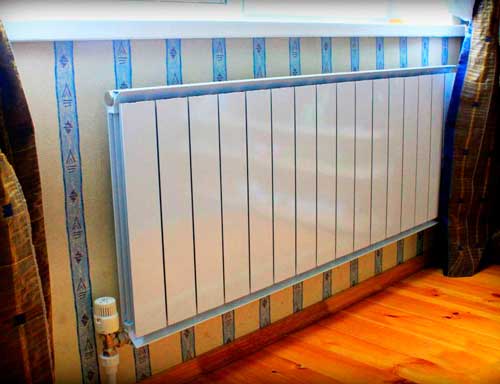
Radiators of domestic manufacturers will cost less, but after getting acquainted with consumer reviews, it is worth giving preference to foreign counterparts, but their price is much higher.
When choosing an aluminum radiator for a localized system of your own home, you must adhere to a list of very important selection and operation conditions:
- An aluminum radiator is the most susceptible to circulating fluid. It is required to strictly observe the required level of water acidity, otherwise such radiators will become unusable within a few years;
- Aluminum radiators have a threaded connection. which increases the risk of leakage;
- The high heat output of aluminum radiators has a downside. When the radiators are heated, the warm air flow rises very quickly, which leads to a temperature difference between the floor and the ceiling.
Sectional aluminum radiator
This means that when choosing aluminum radiators, there is a need to make accurate calculations on the area of the room, since the floor can remain cold.
But aluminum radiators also have undoubted advantages:
- Relatively light weight, which makes it possible to mount on plasterboard walls;
- Quite aesthetically pleasing
- The presence of special taps that allow you to regulate the temperature.
Relatively low price, good design and instant heat dissipation - this is the secret of the popularity of aluminum radiators.
These are quite acceptable radiators for a heating system in a private house.Observing strictly the norms of selection and use, such radiators will heat your cozy home for a long time.
3 What you should know about steel radiators for installation in a private house
Steel batteries are produced in two types: they can be tubular and panel. Panel are two connected plates with a thickness of up to 2 mm. Their advantages include low inertia, radiation of a large amount of heat, modern stylish look, the possibility of manufacturing products of various shapes, low cost and resistance to doubling inside the heating system. However, steel types of radiators have such disadvantages as:
- high risk of rust;
- restrictions on the use in heating systems, the coolant in which contains various reagents from alkali;
- the inability to choose the number of sections - steel radiators are produced already assembled ready-made panels.
One of the varieties of steel radiators is tubular models. Their main advantage is an interesting design and the ability to choose the right shape. You can buy a product with an internal coating of steel with special polymer compositions, which will reduce the risk of rust.
Which heating battery to choose for your home
Shopping list? You do not like the look of the batteries in your home? Do you think that their sharp corners and elevated surface temperatures are dangerous for your small child? Buy a screen on a radiator and install it - it will not take much time and will not require serious financial investments. Meanwhile, such a product is able to provide:
Lamellar heating radiators: characteristics, photo. Heating radiators Lamellar heating radiator: features of the old ones.
With the onset of the warm season, it's time to think about the efficiency of the heating system. If it requires replacement, summer is the best time for installation work. At the height of the heating season, it will not be possible to replace radiators.
Thin metal plates are mounted on the tubes. They are designed to increase the level of heat exchange between the heating element and the air in the room. Plate batteries are used in public buildings and industrial buildings, industrial workshops. In frequency housing construction, they have not received proper distribution for a number of reasons. However, they are widely used for heating multi-apartment buildings, where centralized heat supply dominates. With good building insulation, a plate heater is able to maintain the air temperature at the proper level with a minimum consumption of thermal energy.
Important: there is an opinion that now a cast-iron radiator is worse than Soviet times.
Radiators are an integral attribute of heating systems, if underfloor heating is not used instead. It is not always easy to combine their appearance with the interior. This can be made easier by using screens for radiators. The screens have an attractive design and shape, so there is always something to choose from. What materials are screens made of and which is better to choose? This will be discussed in the article. The screen for the heating radiator has several purposes.
There are several types of modern heating radiators. Depending on the material from which they are made, these devices have different characteristics. That is why problems often arise with how to choose the right heating battery.
To decide which heating battery to choose, you need to pay attention not only to the size and appearance of the radiators, but also to their features.
RELATED VIDEO: Choosing a heating radiator// FORUMHOUSE
Plate heaters
Introduction
A plate heater is a bent or straight pipe for water supply, with steel plates strung on it.A heat carrier moves along the pipe, and the plates significantly increase air convection. The structural simplicity determines their low cost. For aesthetics, the convector heater is covered with beautiful boxes made of thin steel, painted white.
Steel plate heaters - general information
Steel plate heaters in simple speech are called "accordions". The appearance of an accordion is made by plates strung on a pipe for a heat carrier.
A characteristic feature of this type of radiators is great reliability. There are no connections in the plate radiator, in addition to the inlet and outlet of the coolant. As a consequence, the heater itself simply cannot leak, there is nowhere for the heat carrier to push through.
Due to the huge number of plates, and the direct movement of the heat carrier, the design heats up the radiator to a high temperature. To save from touching, the key frame of the heater is closed with a decorative casing. Convection holes are created in the top cover of the casing.
Convector heaters have a low thermal inertia, which means that they can be controlled by automation, in other words, thermostats can be installed in systems with plate heaters.
Lamellar heaters form a fairly powerful curtain of heat. This property of convector heaters makes it possible to use them in floor heating systems. True, the design of thermal convector heaters for installation in the floor differs from wall-mounted convector heaters, but the principle of heating is the same.
Cons of plate heaters (convector heaters)
- The convective type of heating devices does not make it possible to equally warm the room. The batteries are warmer than the opposite wall of the room.
- The plates of a convector heater are an excellent dust collector. It's hard to clean them up. Over time, dust reduces their heat output.
- The appearance of plate heaters is not encouraging, although there are nice models.
Variations of plate heaters
As options, plate heaters are used for heating in the floor (duct convectors) and baseboard heating of the room.
Connection of convector heaters
There are two types of convector heaters by connection. This must be considered at the time of purchase. The first type is a convector heater with side connection. The second type is a convector heater with bottom connection0. It comes with a valve insert.
Heat output of plate heaters
The heat output of convector heaters depends on their length and the number of rows with plates. Height of all convector heaters, 200 mm.
So, the heat transfer of a convector heater into a “one thread” 600 mm long is 347 watts. It is also 3000m long and gives a heat output of 1730 watts. A heater in 4 "threads" 3000 mm long gives heat output of 4179 W, and it is 1000 mm long, it will give off 1393 W of heat.
The calculation of the heater is carried out according to the standard scheme for calculating sections of heaters, taking into account all correction factors. Let me remind you how this is done. (read the publication: The simplest calculation of the heating system)
- For 1 sq. meter area with a ceiling of 3 meters, you need 100 W of heat.
- For a room of 16 sq. meters, you need a heater 1600 watts. This is under good conditions: one window, a ceiling of 3 meters, the room is not angular. If this is absolutely not the case, we use correction factors:
- Two windows k \u003d 1.8: 1600? 1.8 \u003d 2880 W;
- Corner room k \u003d 1.8: 2880? 1.8 \u003d 5184W;
- Ceiling 2.65, k \u003d 2.65 / 3.0 \u003d 0.88: 5148W? 0.88 \u003d 4547 W;
- PVC window k \u003d 0.8: 4547 W? 3637 W.
A standard window has a width of 1400 mm, which means that under each window it is necessary to install 4-section plate heaters with a length of 1400 mm, with a heat output of 1950 W. The data are taken from the passports of the Purmo heaters. That's all!
Specifically for Obotoplenii.ru
Choosing heating radiators for a private house which is better
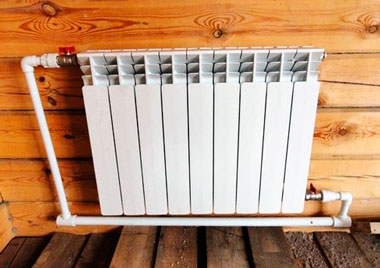
Consider the main advantages of the heating system of a private house:
- Its work is carried out at low pressure, which favorably affects the operation;
- In this system, there are no large hydro-shocks, this provides a wide range of radiators;
- Observing the necessary technical conditions for the acid balance of water, the choice of radiators is very wide.
Taking into account the above, the choice of radiators should be made taking into account the maximum heat transfer coefficient and good value for money. Without going into details, any type of radiators can be operated in a private house. But knowing the advantages of one or the other still does not hurt.
For the manufacture of radiators, the following types of materials are used: cast iron, aluminum, metal (steel), bimetal.
2 Cast iron radiators we study the features of cast iron appliances
The simplest type of radiators is cast iron. These products are still popular on the market, despite more modern counterparts. It is quite simple to explain such popularity - cast iron products have a lot of advantages, including:
- strength and durability, time-tested - can serve two decades or more;
- the ability to assemble a radiator from a different number of sections;
- rust resistance;
- low level of heat transfer;
- the material is not afraid of chemical attack.
The strength is due to the fact that cast iron batteries are equipped with very thick walls. But this is precisely the main disadvantage of the products - too much weight due to the severity of the materials used for the production. Low thermal conductivity is considered both a plus and a minus at the same time. The main advantage is that the batteries, although they warm up slowly, also cool down slowly - if the heating is turned off, the radiators will remain warm for some more time. But quickly adjusting the temperature with the help of regulators for such radiators will not work.
Another disadvantage of cast iron batteries is their unpresentability. True, on the modern market you can find models with an exclusive design, but their cost will be much higher than the price of ordinary radiators.
Panel radiators
To make a panel radiator, you need to take two steel sheets, make them finned and weld them together. Connect the structure to the pipes of the heating system, start up the coolant and enjoy life.
Panels can be from one to three. All of them are available in various sizes. The design is light in weight. Such radiators can be controlled by automation.
Photo: panel radiators
- Painful sensitivity to pressure surges;
- The complexity of care;
- Sensitivity to the composition of the coolant;
- Work at low pressure (7-9 atmospheres, short-term - 12-14 atm.);
- Rusting.
Experts advise installing batteries in private homes with high-quality coolant.
